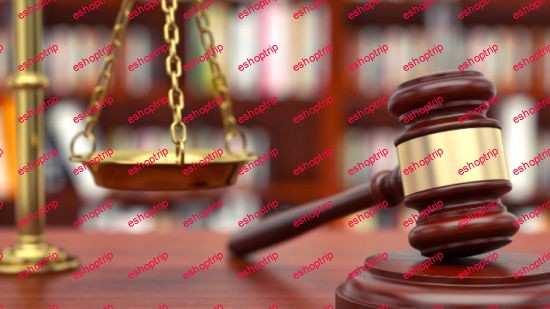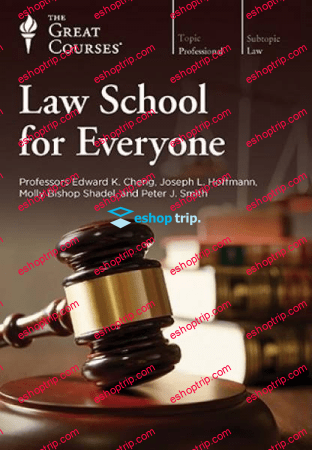h264, yuv420p, 1280×720 | ENGLISH, 44100 Hz, 2 channel | 12h 23mn | AUDIOBOOK + PDF + VIDEO | 11.1 GB
Course Overview
Whether we participate in it or not, government plays a deeply integral role in how we live. From the taxes we pay and the laws that constrain our behavior, to the federal and state institutions that oversee our communities, to the civil rights and liberties we benefit from, our day-to-day existence is shaped in fundamental ways by the nature, policies, and actions of our government.
If you are like most people, however, you have wondered why the US government works like it does. Regardless of your political leanings, we all have a role to play in protecting our democracy, and by gaining a real grasp of the US governmental system, we’re better equipped to engage with society on a variety of levels. For being a member of society requires more than just a cursory knowledge of government and politics; it requires us to be savvy consumers of news, media, and public opinion, and the ability to discern the deeper content and meaning of the legislation and policies we live with. For those outside of the United States, understanding the internal workings of the US government can give crucial insight into America’s behavior and decisions on the world stage.
But there’s an additional, compelling reason for learning about the structure and processes of the US government: It’s fascinating! The experiment of American democracy has been both historically unprecedented and world-changing, and our political institutions and their development tell one of the most remarkable, intriguing, and complex stories of the modern world.
In Understanding the US Government, prominent political scientist Professor Jennifer Nicoll Victor of George Mason University presents a spirited and comprehensive examination of the ins and outs of the American system of democracy, across 24 revealing lectures, covering both its many institutions and the intertwined political features that have developed as the theory of government designed in 1789 was put into practice.
The Workings of US Democracy
As you take a thorough look at the structure and functions of our government, you will begin with the framing of the Constitution, noting how the document was pieced together as a series of compromises between opposing factions.
From there, you’ll delve into essential topics such as federalism; the nature of our civil liberties and civil rights; the individual functions of the executive, legislative, and judicial branches of government; how government interfaces with the economy; how the federal bureaucracy operates; and how elections and voting work—including a hard look at the enigmatic electoral college. You’ll also examine vital political aspects of our system, including the roles of political parties, campaigning, and money, as well as the landscape of organized interests and the media, foreign policy, and what accounts for the extreme partisan polarization that currently grips US politics.
As an illuminating feature of this course, Professor Victor brings focus to many of the underlying complexities, incongruities, and challenges within our system that offer insights into its workings, such as:
- By modern definitions, for decades after its founding, the United States was neither a true democracy nor a democratic republic, due to restrictions on voting rights;
- The powers that are formally accorded to the president are surprisingly few, and many of the powers that presidents exercise are simply implied, or have developed over time;
- The Constitution’s framers did not intend for political parties to form, and our political institutions were created as if parties don’t exist, causing basic conflicts between our politicians and the institutions in which they operate;
- Specific features of our electoral laws that make it inevitable that we will have two, and only two, major political parties; and
- The design of the federal system that exists today is deeply tied to the failure of the Constitution’s framers to adequately resolve conflicts over slavery.
Explore the Core Features of American Government
Early in the course, you’ll examine the system known as federalism, which divides sovereign power between the national and state governments, shedding light on its benefits, protections, and structural features. With this as context, you’ll explore a wide range of subject matter, including:
- The Difference between Civil Liberties and Civil Rights. Although civil liberties and civil rights are core features of American political institutions, they are not well understood. While civil liberties are freedoms protected from government infringement, civil rights are protections guaranteed by government. Instances when liberty and equality have been in conflict are central to understanding the trials we’ve faced as a nation, and the challenges that are yet to come.
- Intricacies of Congress and the legislature. Across three lectures, study how the House and Senate function and interact, how congressional bills are passed and congressional elections operate, and grasp how the institutional design of Congress makes passing legislation difficult, strains its capacity to handle complex policy issues, and can allow for the passing of legislation the majority opposes.
- The Politics of the Supreme Court. Trace the highly charged procedure by which justices are appointed; investigate how political parties, organized interests, and the public try to affect the Court’s rulings; note the parameters of judicial ideology within the Court; and witness the political, social, and policy effects of the Court’s actions.
- How the Federal Bureaucracy Is Organized. Learn how governmental bureaucracy is encompassed within the executive branch, and how it evolved to its current vast complexity; chart its breakdown into the 15 cabinet-level departments and their sub-agencies, the many independent governmental agencies, and the hybrid government corporations.
- The Challenge of Campaign Finance. Contemplate the recent history of campaign finance reform, as it reveals a system with a strong imbalance of power; observe how “soft money,” “527 groups,” “super PACs,” and nonprofit organizations maneuver around campaign finance laws, ensuring that a small and resourceful group of people finance most of what happens during US elections.
- Politics and the Media. Within today’s heated media environment, track the huge gap between liberal and conservative trust of journalism, the phenomenon of political media as both information and entertainment, how the media environment is ripe for misinformation and conspiracy theories, and consider best practices for consuming news.
- America’s Deep Political Polarization. Take a rigorous look at how the US has become more politically polarized than at any time in the past 140 years; uncover three core issues that underlie polarization, and see how our current divisiveness, which may seem like a phenomenon of the present era, is directly traceable to events that took place in the 1970s.
A Complex, Multilayered System
Throughout the lectures, Professor Victor’s extraordinary depth of knowledge, her refreshing clarity in breaking down complexities of our political life, and her gripping and thought-provoking commentary make this a vividly engaging and richly informative experience.
In presenting the subject matter, she offers critical insights into both the strengths and the limits of the US political system. As cases in point, in her reflections on Congress and campaign finance, she addresses the question of whether the current procedures and institutions are adequate to solve the problems American society faces, and how, within the tension between liberty and equality that characterizes this democracy, US policy has historically favored liberty over equality.
In Understanding the US Government, you’ll gain a deepened knowledge and comprehension of the governmental system that we live with on a daily basis, and valuable insights for assessing the policies coming out of Washington, the news, the media, and the ongoing political dialogue that moves this democracy. Join a brilliant political scientist in this incisive look at the underpinnings of the American way of life.











Reviews
There are no reviews yet.